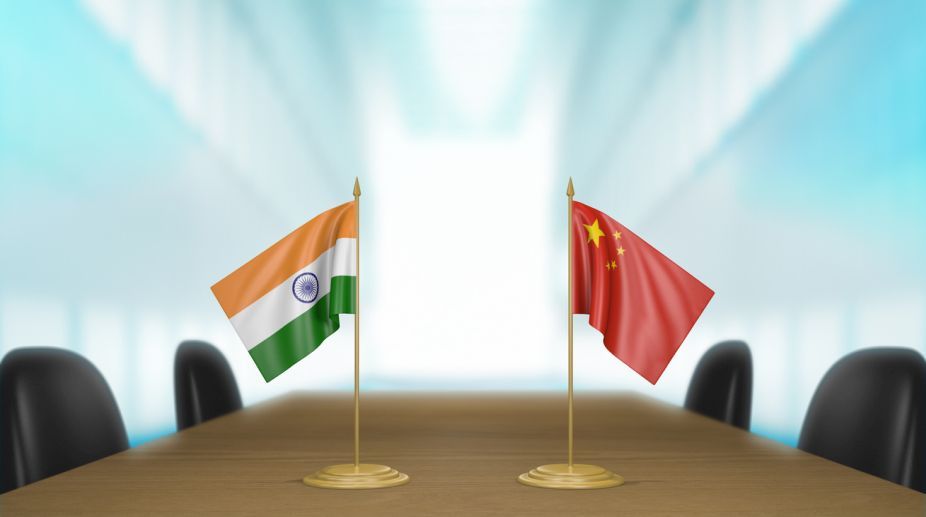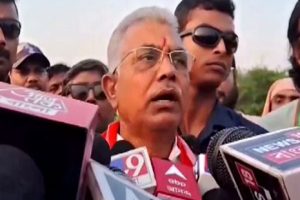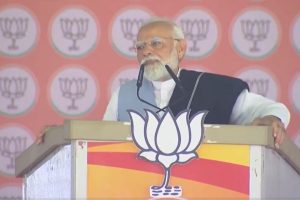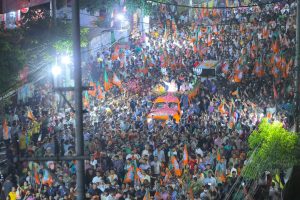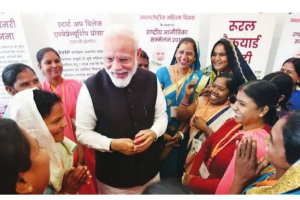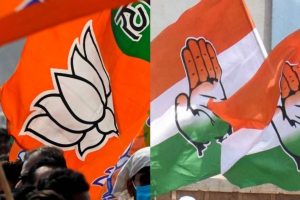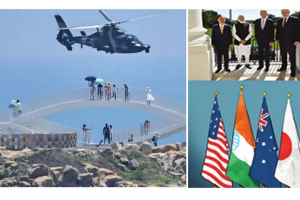Recent times have witnessed increased standoffs along the Indo-Chinese border with claims and counter claims by the two sides.
The latest incident in early June, when troops of both countries jostled physically near the tri-junction where the borders of Bhutan, India and China meet, followed by destruction of two Indian ad hoc bunkers and China simultaneously blocking the movement of pilgrims to Mansarovar, has enhanced tensions. Bhutan also jumped into the fray by issuing a demarche to China for encroaching upon disputed territory.
Presently, about three thousand troops from both sides stand face to face in an escalated environment. Bhutan has no diplomatic ties with China and it has an agreement with India for its security. Chinese media is full of statements that ‘India needs to be taught the rules’ of dealing with disputes along contested borders.
It went on to caution Delhi not to mistake its silence as a sign of weakness. There were also comments that the Chinese government must force Indian troops to retreat to the Indian side by ‘all means necessary’ and ‘China has no desire to confront India’.
China opines that since India is moving closer to the US, it has begun displaying arrogance towards it. Chinese press statements during the visit of Prime Minister Modi to the US included comments that the US is seeking to exploit India to contain China, specifically referring to the announcement by Trump of a forthcoming naval exercise involving US, India and Japan.
It feels that such action by India could enhance tensions between the two. India’s refusal to accept the CPEC and ignore the OBOR meet was in their view, a display of arrogance. To add fuel to an already tense relationship there was a tweet by President Trump stating that China was unable to contain North Korea and there was a reference to North Korea in the Indo-US joint statement.
A senior White House official also stated that Trump’s display of warmth towards Modi was partly aimed at the Chinese President, solely because he was unable to apply requisite pressure on North Korea. Since China at the UN vetoed Masood Azar being declared an international terrorist and blocked India’s entry into the NSG, relations have never really moved ahead. Indo-China standoffs are not new, they have been an ongoing feature, though in this region after a prolonged time.
The Sikkim-China border has generally been accepted with very small areas of dispute, where patrols of either side visit and leave tell-tale marks, thus indicating each other’s perception of the border. The bloody skirmishes of 1967 seem to be a thing of the past.
This time the area concerned is the Chumbi Valley, a narrow stretch, jutting deep between Sikkim and Bhutan, which militarily opens the route for China to cut the Siliguri corridor, also called the Chicken’s neck, the gateway to the Northeast.
This corridor has always been a major vulnerability for India. The road under construction by China was close to the Bhutan border, heading towards a Bhutanese post near the trijunction, in an area disputed by China and Bhutan. Indian troops moved and deployed alongside Bhutanese forces to contain the Chinese due to existing security arrangements.
Hence, Indian troops crossed into disputed land on behalf of Bhutan. This Indian action of interceding on behalf of Bhutan added a new dimension to the ongoing tussle. In most earlier standoffs troops were deployed, carrying placards stating that the area belongs to India hence preventing the other from moving forward.
Destruction of temporary structures has been resorted to earlier. India has destroyed what it has considered as Chinese built structures on Indian side and they have resorted to the same. In this case, the offensive spirit shown by both was in an area that is not directly Indian territory, nor disputed by India, but an area India is responsible for as per agreements.
There were initially no comments by the Indian government, as it was seeking to downplay the incident. In Indian parlance, it was action taken to defend an area which it considered disputed and hence should be defended.
It was China which released the video and made a hue and cry over the incident. While the Indian press remained muted, the government-controlled Chinese media was on a warpath, with comments solely seeking to stoke fires.
The Indian government was compelled to react and clear misconceptions of Chinese threats. It has squarely blamed China for the standoff and brushed aside Chinese reminders of 1962 with the Indian retaliation of 1967.
Presently, both nations continue to hold their ground, with over 3,000 troops of each country deployed in difficult conditions.
The area may appear to be an open patch in the videos but has strategic significance. The Doklam plateau, the area in contention, has immense strategic value to all three nations, albeit for different reasons.
For China, it opens doors for easier induction of forces for operations into the Chumbi Valley and Bhutan, if it decides to violate the neutrality of Bhutan, seeking to open a new avenue of approach into India. While the valley is under observation and domination from Indian positions, the mountainous terrain is a restricting factor.
Further and more importantly, a road in this region permits faster move of supplies to support offensive operations, as against earlier days.
For India, it is an increased threat which would need to be catered for, thus impacting force availability, deployment, employment and reserves. All three nations are presently firm in their stance, unwilling to bend. International border disputes are never easily resolved, especially when perceptions are at vast variances.
One of the sides may have to blink; it remains to be seen which one. Or the standoff may continue for a prolonged duration, when ultimately both sides withdraw seeking talks, basically to save face. Most importantly, along the rest of the border, peace should reign.
This incident is a stark reminder that though there has been no firing, yet lack of faith and trust remain alongside tensions which appear difficult to eradicate.
The writer is a retired Major-General of the Indian Army.

